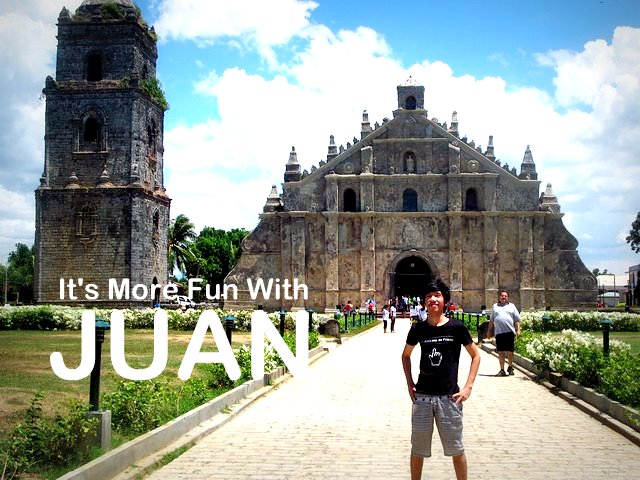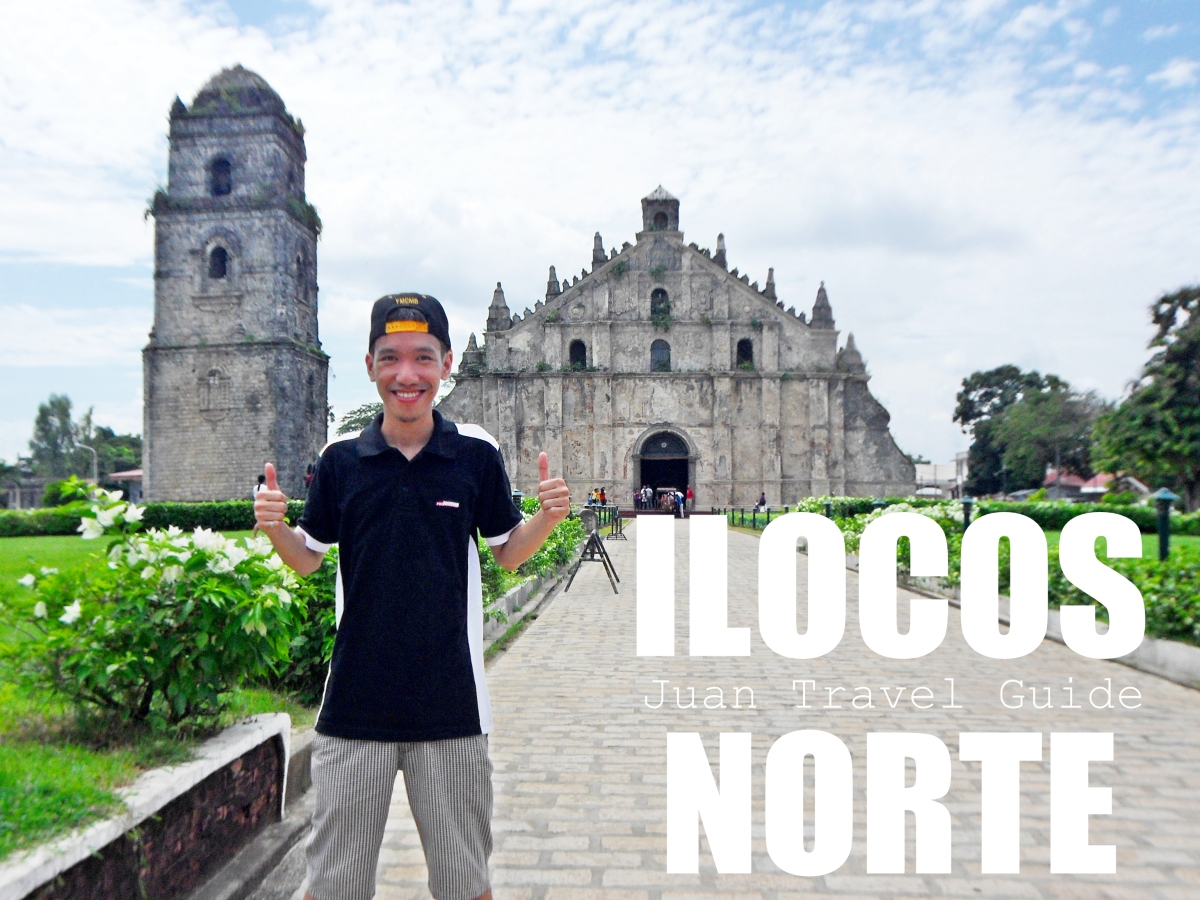Be amazed with this Baroque-style church in the Philippines!
I have visited this place twice (in 2012 and 2013) and both visits I was in awe of this church's beauty. It's truly a breathtaking scene you can only see here in Ilocos Norte.
Loading...
About Paoay Church
The Saint Augustine Church (Spanish: Iglesia de San Agustín de Paoay), commonly known as the Paoay Church, is the Roman Catholic church of the municipality of Paoay, Ilocos Norte in the Philippines.Completed in 1710, the church is famous for its distinct architecture highlighted by the enormous buttresses on the sides and back of the building.
The church is declared as a National Cultural Treasure by the Philippine government in 1973 and a UNESCO World Heritage Site under the collective group of Baroque Churches of the Philippines in 1993.
PAOAY'S PAST
The town of Paoay was originally called "Bombay" as the earliest inhabitants believed to have come from India. The earliest historical record of the area dates back to 1593, becoming an Augustinian independent parish in 1686.Building of the present church was started in 1894 by Augustinian friar Father Antonio Estavillo, completed in 1710 and rededicated in 1896.
Some portions of the church was damaged in the 1865 and 1885 earthquake but was later restored under the initiative of former First Lady Imelda Marcos.
Paoay church is the Philippines' primary example of a Spanish colonial earthquake baroque architecture dubbed by Alicia Coseteng, an interpretation of the European Baroque adapted to the seismic condition of the country through the use of enormous buttresses on the sides and back of the building.
The adaptive reuse of baroque style against earthquake is developed since many destructive earthquakes destroyed earlier churches in the country. Javanese architecture reminiscent of Borobudur of Java can also be seen on the church walls and facade.
The Buttresses
The most striking feature of Paoay Church is the 24 huge buttresses of about 1.67 metres (5.5 ft) thick at the sides and back of the church building.
Extending from the exterior walls, it was conceived to a solution to possible destruction of the building due to earthquakes. Its stair-like buttresses (known as step buttresses) at the sides of the church is possibly for easy access of the roof.
The Walls
The Façade
The stone facade appear as massive pediment rising from the ground and is built leaning towards the front. Square pilasters and stringed cornices divide the facade vertically and horizontally respectively. Its bottom part is plain.
 |
| Paoay Church 2013 |
Gothic features are also present through the use of finials while the triangular pediment shows Chinese elements and Oriental strokes. Crenellations, niches, rosettes and the Augustinian coat of arms can also be seen. Façade is made of brick on the lower level and coral stones on the upper level.
The Bell Tower
Adjacent to the facade is a three-storey coral bell tower constructed separately from the church building on the right side resembling a pagoda. It was in 1793 when the cornerstone of the bell tower was laid.
 |
| Paoay Church 2013 |
It stands at some distance from the church as a protection against earthquake. It served as observational post for Filipino revolutionaries against the Spaniards in 1898 and by Filipino guerrillas against Japanese soldiers during World War II.
ALSO READ: The Sinking Bell Tower of Laoag City
You may also want to see the church's ruined convent just across the street.
You may also want to see the church's ruined convent just across the street.
ATTRACTIONS TO SEE IN ILOCOS NORTE
Klook.comRESTORATION
Several projects for the restoration of Paoay Church is sought by government and non-government organizations due to possible question on its structural integrity.The local government of Ilocos Norte through resolution is seeking the reconstruction of the church's convent presently in ruins and retrofitting of the church.
Here's me during my first (2012) and second (2013) visits.
Here's me during my first (2012) and second (2013) visits.
TRAVEL TIPS:
- Don't forget to visit the Jardin De San Agustin. It's picturesque and worth a photo-op for.
- Make sure to drop by Herencia de Paoay across the church, where you can sit and eat, and buy some Ilocandia stuff at.
- Try eating at Herencia Restaurant.
- There's a lot of cafe and shop you can eat from.
- There are also lodging houses nearby the area.
ACTIVITIES AND TOURS IN MANILA
Frequently Asked Questions (FAQs) About Paoay Church
- Why is Paoay Church famous?
Paoay Church is famous because of its historical significance and its baroque architecture. The historical church is famous for its distinct architecture highlighted by the enormous buttresses. Portions of the church were damaged by two major earthquakes - What is the famous church in Paoay?
The Saint Augustine Church, famously known as the Paoay Church, takes you back to the Philippine's Spanish colonial era with its charming baroque architecture. - What is the purpose of the 24 heavy buttresses of Paoay Church?
The most striking feature of Paoay Church is the 24 huge buttresses of about thick at the sides and back of the church building. Extending from the exterior walls, it was conceived to a solution to possible destruction of the building due to earthquakes. - What is the Paoay church made of?
Known as the “Earthquake Baroque” church in the Philippines, Paoay church was built of baked bricks, coral rocks, salbot (tree sap) and lumber, and has 24 carved massive buttresses for support. - What makes Paoay Church outstanding from other well known churches around the country?
What makes Paoay Church outstanding from other well-known churches around the country is its impressive pyramid-like structure considered as a primary example of the earthquake baroque style of architecture characterized by its thick walls made from coral stones and bricks.
WHERE TO GO IN ILOCOS?

IMPORTANT NOTE: The rates, contact details and other information indicated in this post are accurate from the time of writing but may change without IMFWJ's notice. Should you know the updated information, please let us know by leaving a message in the comment box below.
WHERE TO STAY IN ILOCOS NORTE:


















No comments
Let us know your thoughts!